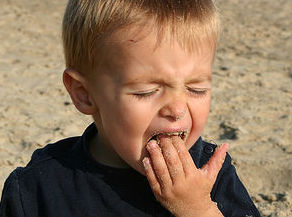
Resources
What you need to know about Pica
No one wants to know what pica is. But in the disability community, pica may come looking for you. And if pica knocks on your door, you’re going to need some answers. If you’re squeamish, stop reading now.What is Pica?
Pica is the urge to eat non-foods such as sand, clay, ice, hair, cloth, starch, chalk, stones, dust, glass, paint, wood, paper, mucus, urine or feces. Pica-related behavior often occurs in children or pregnant women due to nutrient deficiencies, especially a lack of iron, zinc or other minerals in the diet. Pagophagia, the pathological consumption of ice, is typically associated with anemia. In many cultures around the world, some types of pica are part of religious or healing rituals, and are considered appropriate within that context. In children under the age of 2, occasional sampling of non-foods is a normal part of sensory development, but pica is a dangerous behavior of persistent cravings that continues longer than 1 month.Causes of Pica
Pica is most common in people with developmental disabilities, brain injury, seizure disorders, obsessive-compulsive disorder and schizophrenia. According to the National Autism Center, these conditions are all possible causes of pica.Complications from Pica
Pica is dangerous because it can lead to:- Dental injury from eating hard or abrasive items
- Intestinal blockages or abdominal pain
- Internal injuries requiring emergency surgery
- Parasitic infections from eating dirt or feces
- Lead poisoning from eating paint chips or roadside dirt



